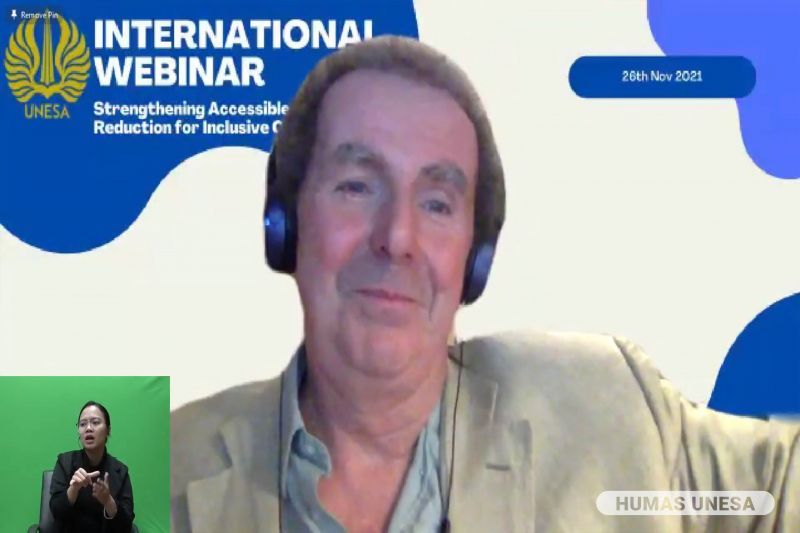
www.unesa.ac.id
Unesa.ac.id, SURABAYA-The 2021 Unesa International Forum Of University Rectors (UNIFUR) with the theme 'Strengthening Accessible Disaster Risk Reduction for Inclusive Communities' presented many speakers at home and abroad. On the third day of the annual forum, three speakers were present, such as Jun Kawaguchi from the University of Tsukuba, Japan, Kieron Sheehy from The Open University, United Kingdom, and Dr. Diana Rahmasari, S.Psi., M.Sc., Psychologist., Lecturer of UNESA.
Jun Kawaguchi as the first speaker opened the material by explaining the amount and percentage of damage caused by natural disasters. From 2016 data, Japan is one of the countries that experience natural disasters the most with a percentage of 17 percent. Then, followed by other Asian countries and America in third place. "The Japanese government has formed various strategies and preparations to deal with natural disasters," he said.
He added that when a disaster occurs, children, pregnant women, the elderly and people with disabilities must pay attention when a disaster occurs. They are a vulnerable group who cannot save themselves, therefore it is necessary to think about anticipatory strategies and even evacuation.
On that occasion, Kieron Sheehy said that natural disasters can occur anytime and anywhere, especially in disaster-prone areas such as coastal areas, volcanic slopes and so on.
In addition, he explained that there are 3 things that can help people with disabilities when facing disasters, namely; understand more about persons with disabilities; engage community, health and disability workers in the field; and officials and communities need to take a greater role in assisting vulnerable groups.
Meanwhile, Diana Rahmasari, said that being able to survive a disaster is a very complicated process for people with disabilities. Especially for the physically disabled with mobility difficulties. In the event of natural disasters such as earthquakes, tsunamis, and fires. "There are several efforts that can be made, at least two things, infrastructure ranging from equipment, disaster response teams to disabled-friendly architecture and disaster education," explained the Head of the UNESA SMCC.
In addition, he said that the disaster response team did not have to come from outside. But it can come from the closest people, neighbors and family. Therefore, they need to be given an understanding of disaster through regular disaster mitigation training. "With more and more people who understand disaster, it is hoped that casualties and losses can be minimized," he said. [UNESA PR]
Author : Wulidah
Editor: @zam
Share It On:






